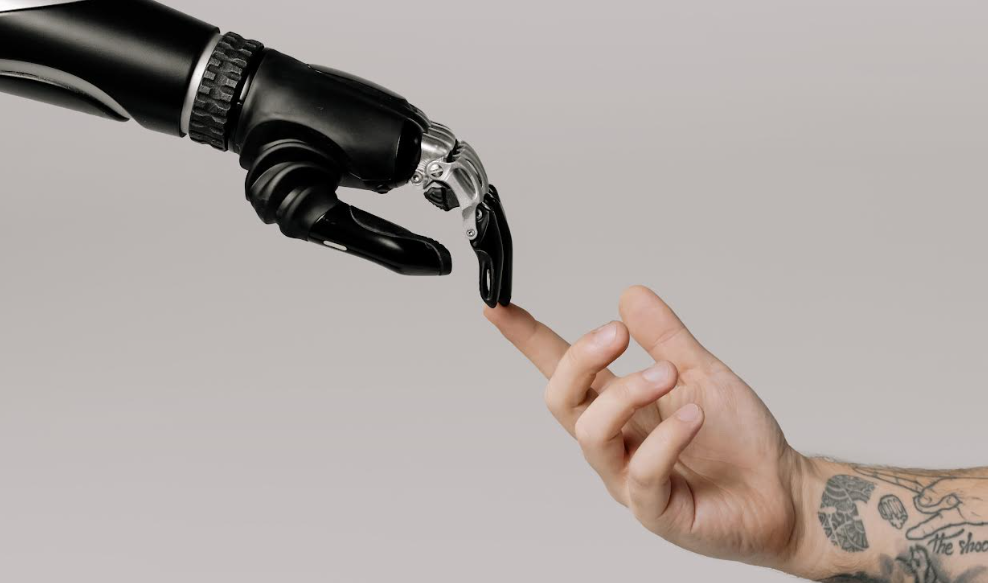Humans have been embracing the use and advancement of artificial intelligence (AI) for quite a few years now. We use it at home, at the bank, while we’re shopping, and plenty of other everyday instances that feel completely normal and a part of our lives.
But one of the biggest ways that AI has become a part of the human experience is in the workplace. Many of the systems and platforms we use to reach professional goals are now powered by AI, and we’ve come to rely on it as a powerful tool for driving research, collaboration, and profit.
But this “reliance” has drawn much speculation in recent times, with some people feeling uncertain about whether this human-machine collaboration is headed.
It’s fair to say that AI and machine learning (ML) have entered our personal and professional lives for good, with 35% of companies already using AI and 42% exploring this technology for its implementation in the future.
But what does that mean, and how will things look in years to come? Let’s unpack how to prepare for a collaborative human-machine future and explore some of the reasons why experts think we’ve no absolute reason to fear it.
5 Ways To Optimize The Future Of Human And Machine Collaboration
If we’re going to continue working with AI and ML in future years, we’ve got to do it right. There are productive and unproductive ways to work with these powerful tools, and there are certain strategies we can implement to optimize our relationship with them, such as:
1. Leverage AI for personalized marketing strategies
Personalization is one of the most effective marketing strategies in use today. Consumers go wild for it. But without AI-powered tools, creating personalized marketing strategies is exhaustive and ineffective.
You can develop a better relationship with these kinds of machines by leveraging them for more audience-specific marketing campaigns.
2. Train your team to adopt AI into their workflow
If you want to achieve peak collaboration between yourself or your team with AI, you need to put concerted time and effort into familiarizing yourself with it. These tools are designed to be intuitive and easy to use, but the more time you spend using them, the more natural they will feel.
People who use AI, automation and machine learning on a regular basis will be able to develop a healthier relationship with it and utilize it more effectively in the coming years.
If you are the head of a team or business, providing training for these kinds of tools is a great way to promote a sustainable, collaborative relationship with technology.
3. Play around with AI-generated consumable content
We are already seeing a lot of people and businesses utilizing AI to produce consumer-friendly content, especially in the writing field. You can use software tools like ChatGPT, Jasper, and ChatAI to produce everything from blog posts to social media bios.
However, it’s important to remember that while AI-generated content can be an effective way to produce good content, it will never have the same quality or perspective that a human does. It may also not be factually correct, so this needs checking prior to publication.
However, experimenting with these tools and learning their ways can make you or your business more integrated into the future world of big tech.
4. Invest in AI-powered tech tools
AI-powered tools largely relate to automation. Many of the dull, repetitive, and time-consuming tasks we are burdened with day-to-day can be alleviated through automatic tech tools.
Analyzing data trends, generating insights, and identifying errors is what AI does best, and it can make our working lives a whole lot easier. We see this all the time in tools like project management software, time-tracking software, and data analysis tools.
Investing in these tools can not only make your workforce more efficient and productive, but it can also help you cultivate a more comfortable relationship with the tools in general.
5. Keep up to date with the latest AI and ML trends
And finally, something we should all be doing to prepare for optimal human-machine collaboration is keeping up with all the latest news and trends relating to AI and other forms of integrative technology.
By following industry leaders and researching both current trends and future predictions, we can move forward into a relationship with technology that is as sustainable, manageable, and productive as possible.
Are Humans Going To Be Replaced By Robots?
It’s in the back of all of our minds. Should we be afraid of AI and ML replacing our jobs? Sometimes, it feels like they could. But in reality, there are many reasons not to fear this particular vision for the future.
Humans are still integral to the global workforce.
And while AI is proving incredibly useful for the optimization and streamlining of certain technological processes, that doesn’t mean it is going to steal our jobs. If you need proof, take a look at these reasons why humans will be essential to current and future workforces:
AI lacks emotional intelligence and soft skills
Soft skills are essential for everyone in a functional workplace. You need to be able to listen, empathize, and share open dialogue with others in order to be a true asset.
AI does not have any of these skills, and it likely never will; at least not in the same way that we do, which is what matters.
AI’s creative potential is limited by the data it receives
When it comes to brainstorming fresh, original ideas, AI is not that innovative. These systems can only give back to you what you’ve already put into them, making them great for performing mundane tasks but not for coming up with truly unique concepts. While AI can help with ideation, the ideas it does supply are based on past human input.
AI still needs to be fact-checked by humans
Because AI can only put out what goes into it, its content does still need to be regulated by humans. Even now, as AI systems like ChatGPT are being used to produce content, there are many colloquial errors and cultural misunderstandings that bleed through.
Even the best-performing AI systems still require a human eye before being considered top-tier content, which means we’ll play a role in its usage for the foreseeable future.
Collaboration Is Key
Without access to the right sources of information, it’s easy to misconstrue what a collaborative human-machine future really is. Working together with these powerful tools has the potential to transform and elevate the global workforce as long as we utilize it in the right way.














